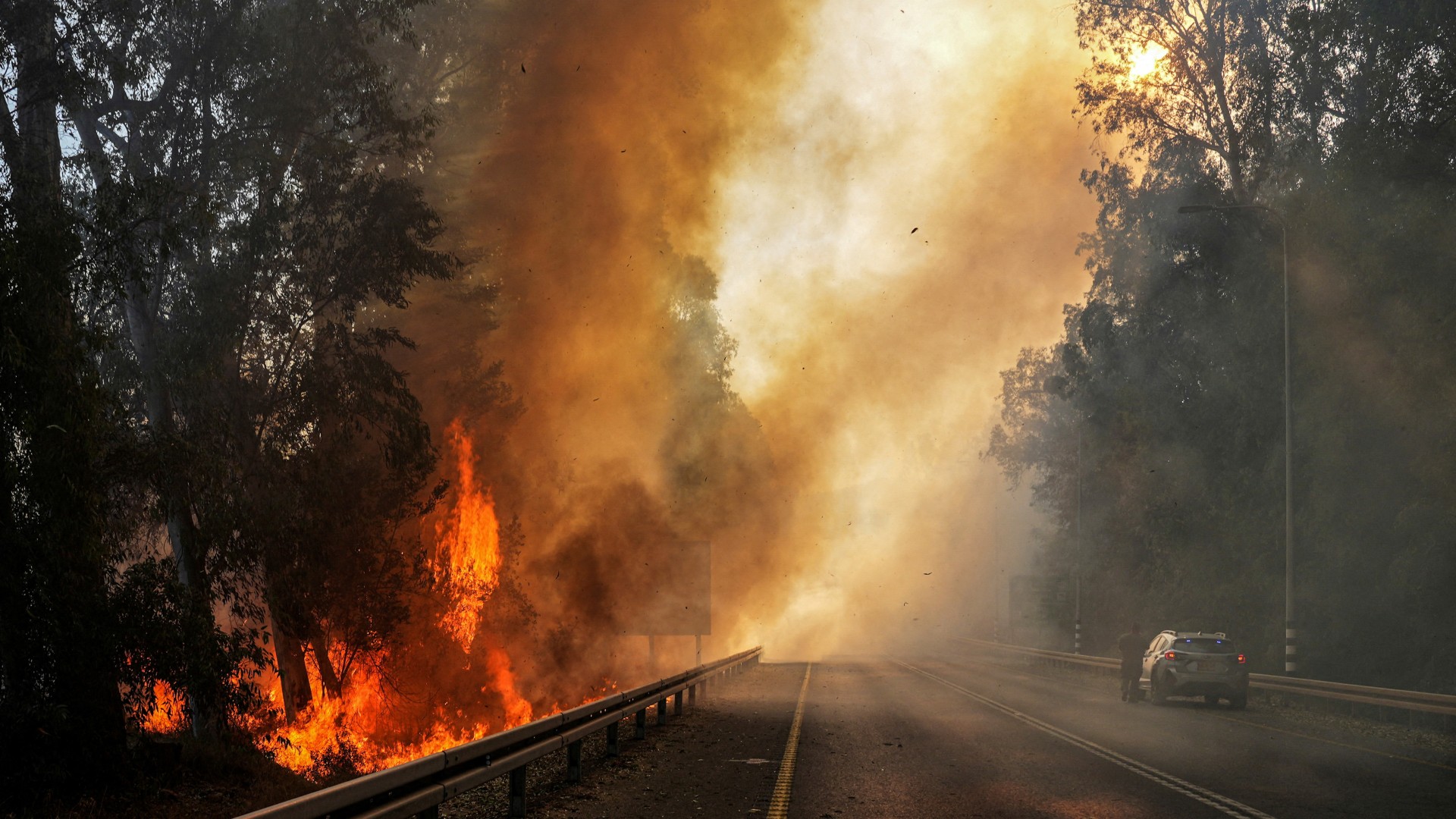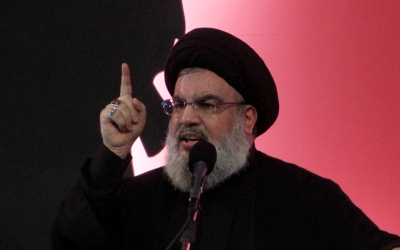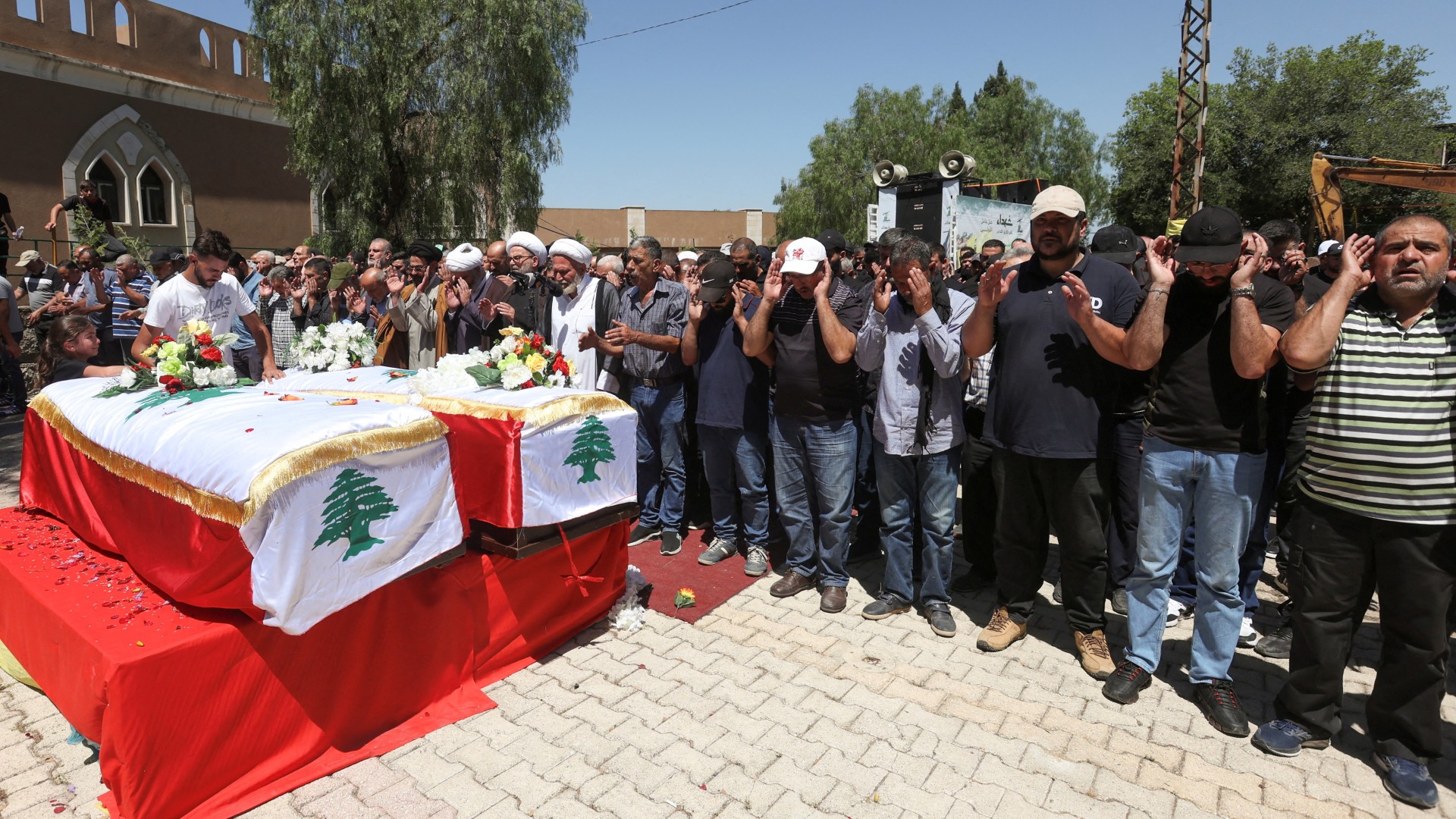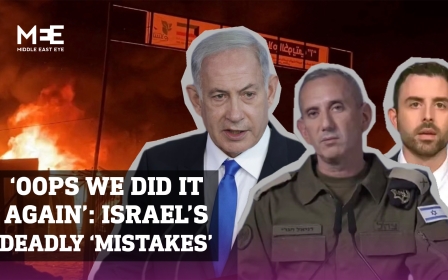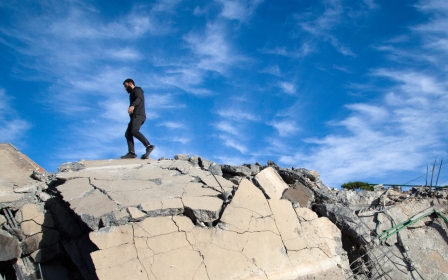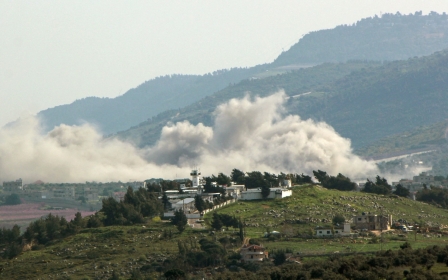Israel eyes war in Lebanon, but Hezbollah poses unique threat

Ever since it became clear that Israel’s ground attack on Gaza would be unprecedented and carry on for months without end, the region has been acutely aware of the risk of the conflict spreading like wildfire to the Lebanese border.
In the last few days, this metaphor became a reality.
Firefighters on Tuesday battled flames around Kiryat Shmona, brushfires set off by a volley of drones and missiles fired by Hezbollah.
The undeclared war in the north between Hezbollah and the Israeli army has been intensifying, with each side trading heavier blows across an ever-widening area.
Israel targeted senior Hezbollah commanders deep in the Beqaa valley. In response, Hezbollah demonstrated that its rocket force is qualitatively different from Hamas’s arsenal.
New MEE newsletter: Jerusalem Dispatch
Sign up to get the latest insights and analysis on Israel-Palestine, alongside Turkey Unpacked and other MEE newsletters
On Saturday, for the first time, Hezbollah launched its heavy Burkan rockets at a military base close to Kiryat Shmona. The rockets have a short range but carry warheads with hundreds of kilograms of explosives.
Gibor Camp, the headquarters of the Israeli army’s 769th brigade, was heavily damaged, although there were no casualties.
Later that day, Hezbollah shot down a large surveillance drone, a Hermes 900, with a surface-to-air missile, giving Israel a taste of its estimated armoury of 130,000 rockets and missiles.
Hezbollah has already demonstrated its ability to launch missiles that fly under Israel’s Iron Dome. On Thursday, it released a video showing it had struck an Iron Dome battery.
In another show of strength, Hezbollah wounded killed one Israeli and wounded 10 others on Wednesday in a kamikaze drone strike on Hurfeish.
Meanwhile, pressure is building inside Israel concerning the 60,000 Israelis evacuated in October from homes within a three-mile range of the Lebanese border.
The cross-border jousts have created a string of “ghost” towns and settlements, now largely deserted. Agriculture still functions and the region produces most of Israel’s eggs, but the tourists are gone. Most public services are suspended and the schools are closed.
With the new school year approaching in September, some former residents are buying or renting new homes.
There is a growing fear that the northern border could remain uninhabitable for years. This generation of Israeli Jews is getting a taste of the Palestinian experience of being exiled in their own country.
Eyal Hulata, a former Israeli national security adviser, said Israel should announce a date within the next few months for displaced Israeli civilians to return and challenge Hezbollah to scale back its shelling or face all-out war.
"Israelis cannot be in exile in their own country. This cannot happen. It is the responsibility of the IDF to defend civilians. It is what we failed to do on 7 October," he said.
“After very good training, we are prepared to move towards an attack in the north,” Herzi Halevi, the army chief of staff, said on Tuesday. “We are getting near a decisive moment.”
An external threat
There is a difference in how Israel perceives Hamas and Hezbollah. Hamas is seen as an internal enemy, with supporters and potential recruits in the occupied West Bank and Jerusalem, while Hezbollah remains an external threat.
That said, the rationale behind a war aimed at dismantling Hamas in Gaza applies even more to Hezbollah. If Israel cannot live with neighbours powerful enough to mount a second raid like that of 7 October, then a full-blown war is not a matter of when, not if.
But is it?
For all the powerful winds fanning the flames along the border, there are - or should be - equally strong disincentives.
Let’s list them. The biggest one is the military. If the might of the Israeli army failed to crush Hamas after eight months on flat terrain, sealed off and surrounded on all sides, what prospect would it have with the highly armed and trained Hezbollah force fighting in mountain ranges, with Lebanon and Syria as its hinterland?
Another war in Lebanon would consume a significant quantity of guided bombs and missiles, which Israel currently does not have. It has already nearly run out of bombs once this year.
On 29 March, the chairman of the joint chiefs of staff, General Charles Q Brown, stated that though the United States has “been supporting [Israel] with capability, they've not received everything they've asked for” because Israel requested weapons that they “either don’t have the capacity [for] or [are] not willing to provide, not right now, in particular”.
Brown’s logic would apply just as much to opening a second front in Lebanon, which America has clearly and repeatedly stated it does not want.
To start a war in Lebanon, Israeli Prime Minister Benjamin Netanyahu would need not only US President Joe Biden’s permission, but also his bombs.
At the very least, Netanyahu would need to secure some kind of temporary ceasefire in Gaza to open a second front in Lebanon.
But here comes the third major obstacle: while Israel may have a trigger-happy prime minister who needs a war for his political survival, it also has a populace that is tired of war.
Let’s be clear, this is not for moral reasons. Eight months into the war, there remains widespread support for continuing the war in Gaza, which aims to dismantle Hamas.
Yet, war fatigue is setting in.
There are anecdotal reports of Israelis not showing up for duty as reservists. They are by no means conscientious objectors. They cite personal, family or business reasons, but there is also an element of dissent implied in their no-shows. They don’t see an end to a state of perpetual war.
It’s a grey zone. People don’t show up and the authorities look the other way. But it is still happening. To what extent, we do not know.
The most volatile of situations
A war in Lebanon would not be a short affair, and its consequences would be felt in Israel to a far greater extent than the war in Gaza.
Hezbollah has the capability to strike power stations across Israel, close Ben Gurion airport and maybe even hit the Israeli army’s headquarters in central Tel Aviv.
Such a war would severely damage an already fragile economy. While it took only a few months to recover after 7 October 2023, a war that sends everyone from Haifa to Tel Aviv into air raid shelters would have a vastly different impact.
Israel’s high-tech industry, which depends on international travel, would be shut down or forced to relocate offshore.
However, we are already living in an extremely volatile situation.
By laying out a second ceasefire offer to Hamas and presenting it as Israel’s offer, Biden exposed Netanyahu’s lies in a very clear and brutal fashion. The offer is so sensitive that even Itamar Ben Gvir cannot be shown it.
On top of that, the long-running issue of the Haredim, the ultra-orthodox Jews, avoiding military service is coming to a head.
The High Court is expected to rule soon that the Haredim must either be available for military service or the government must stop funding students in their yeshivas, or religious schools. As the current coalition relies on the votes of two parties representing the Haredim, such a ruling would probably lead to the fall of the government.
The far right is ready to pull out of the government. Finance Minister Bezalel Smotrich claims to get his orders and inspiration from God, caring little about his declining poll ratings. He prays for a miracle that will allow the right wing to win the next election.
Ben Gvir, on the other hand, is a younger politician who senses that power is within his reach. Like Marine Le Pen, Ben Gvir is playing the long game. He may lose each election, but each time he grows stronger politically and gets closer to his ultimate goal.
Ben Gvir is ready to lose the next election as long as it means the end of Netanyahu’s political career.
With Netanyahu out of the way, Ben Gvir could lead a coalition of the far right and a good portion of Likud, positioning himself to run for power in the election after that. Many Israelis, especially the younger generation of voters, see Ben Gvir as a prime minister in waiting.
Netanyahu’s room for manoeuvre is narrowing, testing his Houdini-like powers of escape.
Middle East Eye delivers independent and unrivalled coverage and analysis of the Middle East, North Africa and beyond. To learn more about republishing this content and the associated fees, please fill out this form. More about MEE can be found here.


